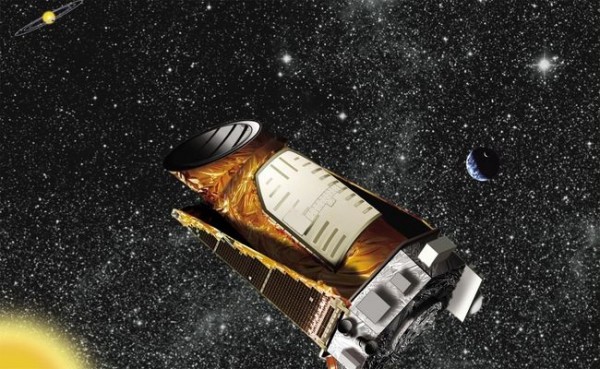Eight More Exoplanets Discovered
| Marco Foronda | | Feb 04, 2015 07:06 AM EST |
(Photo : REUTERS/NASA) An artist's renduition of the Kepler telescope.
Harvard-Smithsonian Center for Astrophysics scientists announced the discovery of eight new exoplanets in the "Goldilocks" zone of a galaxy 470 million light years distant.
Guillermo Torres, one of the scientists and lead author of the paper, said most of the newly found planets are rocky and appear to be similar to our planet.
Like Us on Facebook
The scientists named two of the planets Kepler-438b and Kepler-442b. They said these two are the most similar to Earth among the eight new exoplanets. They said these two exoplanets orbit a red dwarf star smaller and colder than the Sun.
Scientists explained that Kepler-438b has a 35-day year while Kepler-442b orbits once every 112 days. Both of them have smaller orbits, which mean their years are shorter than what we have on earth.
"For our calculations, we chose to adopt the broadest possible limits that can plausibly lead to suitable conditions for life," Torres explained.
Based on their calculation and theories, scientists were able to figure out that Kepler-438b has a 70 percent chance of being habitable, while Kepler-442b has 97 percent chance of having an Earth-like environment.
Currently, there are 1,876 recognized exoplanets orbiting stars other than our own Sun. There are twice as many planetary discoveries still waiting for confirmation. Most of them were discovered using the Kepler telescope.
The Kepler telescope was designed specifically to observe a portion of the Milky Way galaxy in search of planets Earth-like in size and that could have a habitable environment.
TagsGoldilocks Zone, planets, eight planets, Milky Way, Galaxy, space exploration, NASA, kepler telescope, Kepler-442b, Kepler-438b
©2015 Chinatopix All rights reserved. Do not reproduce without permission
EDITOR'S PICKS
-

Did the Trump administration just announce plans for a trade war with ‘hostile’ China and Russia?
-

US Senate passes Taiwan travel bill slammed by China
-

As Yan Sihong’s family grieves, here are other Chinese students who went missing abroad. Some have never been found
-

Beijing blasts Western critics who ‘smear China’ with the term sharp power
-

China Envoy Seeks to Defuse Tensions With U.S. as a Trade War Brews
-

Singapore's Deputy PM Provides Bitcoin Vote of Confidence Amid China's Blanket Bans
-

China warns investors over risks in overseas virtual currency trading
-

Chinese government most trustworthy: survey
-

Kashima Antlers On Course For Back-To-Back Titles
MOST POPULAR
LATEST NEWS
Zhou Yongkang: China's Former Security Chief Sentenced to Life in Prison

China's former Chief of the Ministry of Public Security, Zhou Yongkang, has been given a life sentence after he was found guilty of abusing his office, bribery and deliberately ... Full Article
TRENDING STORY

China Pork Prices Expected to Stabilize As The Supplies Recover

Elephone P9000 Smartphone is now on Sale on Amazon India

There's a Big Chance Cliffhangers Won't Still Be Resolved When Grey's Anatomy Season 13 Returns

Supreme Court Ruled on Samsung vs Apple Dispute for Patent Infringement

Microsoft Surface Pro 5 Rumors and Release Date: What is the Latest?










